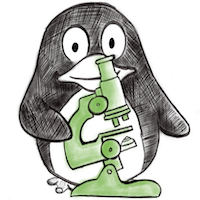Receive a weekly summary and discussion of the top papers of the week by leading researchers in the field.
 General
General
ARTIFICIAL INTELLIGENCE AND ANORECTAL MANOMETRY: AUTOMATIC DETECTION AND DIFFERENTIATION OF ANORECTAL MOTILITY PATTERNS - A PROOF OF CONCEPT STUDY.
In Clinical and translational gastroenterology
BACKGROUND :
METHODS :
RESULTS :
CONCLUSION :
Saraiva Miguel Mascarenhas, Pouca Maria Vila, Ribeiro Tiago, Afonso João, Cardoso Hélder, Sousa Pedro, Ferreira João, Macedo Guilherme, Junior Ilario Froehner
2022-Dec-15
 Pathology
Pathology
Improving quality control in the routine practice for histopathological interpretation of gastrointestinal endoscopic biopsies using artificial intelligence.
In PloS one ; h5-index 176.0
BACKGROUND :
METHODS AND FINDINGS :
CONCLUSIONS :
Ko Young Sin, Choi Yoo Mi, Kim Mujin, Park Youngjin, Ashraf Murtaza, Quiñones Robles Willmer Rafell, Kim Min-Ju, Jang Jiwook, Yun Seokju, Hwang Yuri, Jang Hani, Yi Mun Yong
2022
 General
General
ULD-Net: 3D unsupervised learning by dense similarity learning with equivariant-crop.
In Journal of the Optical Society of America. A, Optics, image science, and vision
Tian Yu, Song Da, Yang Mengna, Liu Jie, Geng Guohua, Zhou Mingquan, Li Kang, Cao Xin
2022-Dec-01
 General
General
One-to-all lightweight Fourier channel attention convolutional neural network for speckle reconstructions.
In Journal of the Optical Society of America. A, Optics, image science, and vision
Lan Botian, Wang Hao, Wang Yangyundou
2022-Dec-01
 General
General
Multiscale feature pyramid network based on activity level weight selection for infrared and visible image fusion.
In Journal of the Optical Society of America. A, Optics, image science, and vision
Xu Rui, Liu Gang, Xie Yuning, Prasad Bavirisetti Durga, Qian Yao, Xing Mengliang
2022-Dec-01
 General
General
Eleven quick tips for data cleaning and feature engineering.
In PLoS computational biology
Chicco Davide, Oneto Luca, Tavazzi Erica
2022-Dec
Weekly Summary
Receive a weekly summary and discussion of the top papers of the week by leading researchers in the field.
